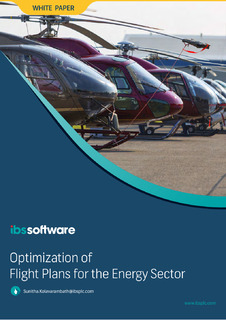Gaining efficiency and lowering costs have become the unofficial mantras of the energy sector during the latest industry downturn. As the supply-demand imbalance dragged down commodity prices and profits, many companies have turned to technology to improve operations.
While the basics of aerodynamics remain unchanged there has been a significant change in flight operations around the world. One of the key trends in this segment is automation. A potential area for automation is the creation of flight plans based on current or future forecast of people movement demands. Automation of flight plans considers the factors that affect a flight, in line with new technologies to produce a plan with minimum flight time, higher utilization, and higher productivity resulting in reduced operational cost and fuel usage.
This white paper details a solution from IBS that optimizes flights for the energy sector by automating the helicopter and fixed-wing flight scheduling process. IBS' optimization solution maximizes aircraft utilization and minimizes cost by focusing on opportunities to combine flights and downsize fleet sizes. The optimization solution predicts flight plans based on defined business constraints and logic for the demand input provided to it. Automation and optimization of flight plans have significantly improved operational efficiency and decision-making capabilities of aviation logistics.


